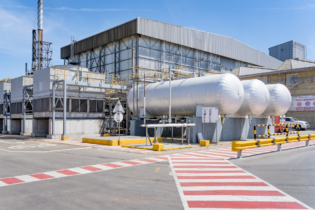The ‘24 Hours of Reality: The Cost of Carbon’ presentation, streamed live to South Africa this week, highlighted the risk of South Africa and Africa’s food supply becoming increasingly vulnerable to climate change and to be addressed by governments and businesses.
Speakers emphasised the dire need for agricultural growth in Africa. However, drought, high temperatures and water shortages are hampering Africa’s agricultural industry. Promethium Carbon, a carbon advisory firm, hosted a live viewing of the presentation, the brainchild of The Climate Reality Project, an organisation founded and chaired by former United States Vice President and Nobel Laureate Al Gore. This was the third annual presentation of 24 Hours of Reality, with last year’s broadcast garnering over 17-million online views. This year’s broadcast focused on the current climate crisis in Africa and stressed the importance of putting a price on carbon. “It was particularly relevant given South Africa’s proposed carbon tax which is set to commence in 2015,” said Katie Ross, a carbon advisor at Promethium Carbon. Gore said that, based on the current growth rate, Africa’s population will be greater than China and India’s combined by 2040 if the current birth rate is not addressed. “Africa and the Middle East are constantly experiencing food deficits which are exacerbated when countries, with historic surpluses, experience reduced crop yields,” he said. Not only does this impact on lower maize exports to poorer countries, but creates price spikes that have resulted in riots, as seen in Syria. “Droughts affected farmers in Syria with tragic results,” said Gore. “The political crisis and civil war was fed in part by drought, which devastated the agriculture and the economy.” In 2011,Syria had suffered four consecutive years of drought, leading to crop failure, livestock losses and high food prices. By late 2010, the drought had affected at least 1,3-million people. Small-scale farmers and herders saw their income decline by as much as 90 percent.*The 24 Hours of Reality broadcast coincided with the recent release of two international climate change publications:
The Working Group I Contribution to the IPCC Fifth Assessment Report Climate Change 2013: The Physical Science Basis Summary for Policymakers: The document shares a few snippets from the current climate change science, discoveries and models, and has revealed that:- 97 – 98% of the climate researchers most actively publishing in the field support the tenets of anthropogenic climate change outlined by the IPCC;
- Human influence has been detected in warming of the atmosphere and the ocean, in changes in the global water cycle, in reductions in snow and ice, in global mean sea level rise and in changes in some climate extremes;
- Over the last two decades, the Greenland and Antarctic ice sheets have been losing mass, glaciers have continued to shrink almost worldwide, and Arctic sea ice and Northern Hemisphere spring snow cover have continued to decrease;
- The rate of sea level rise, since the mid-19th century has been larger than the mean rate during the previous two millennia.
- Each of the last three decades has been successively warmer at the Earth’s surface than any preceding decade since 1850.







